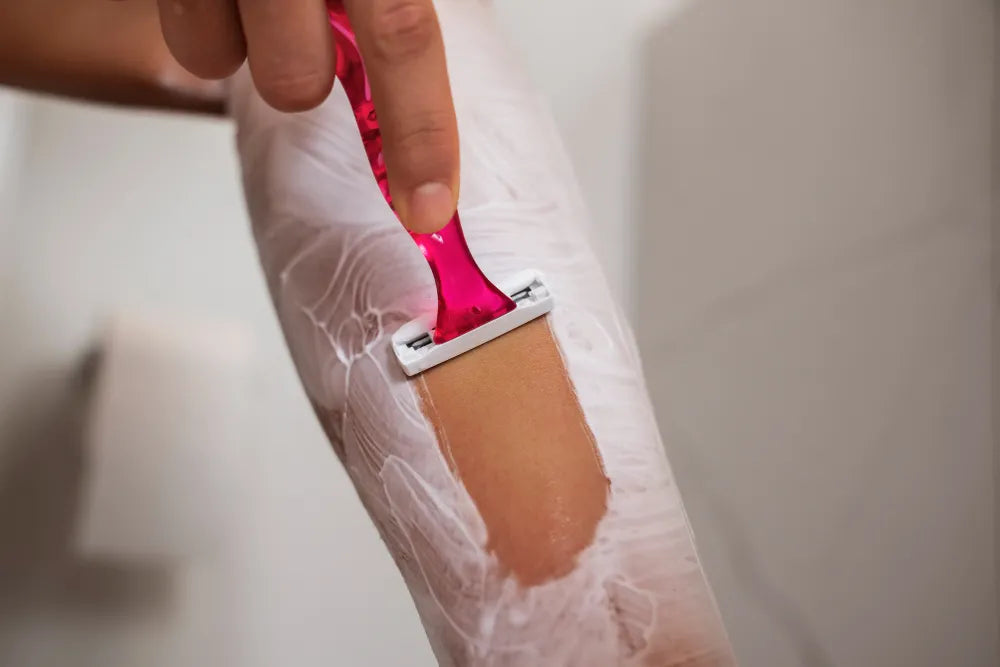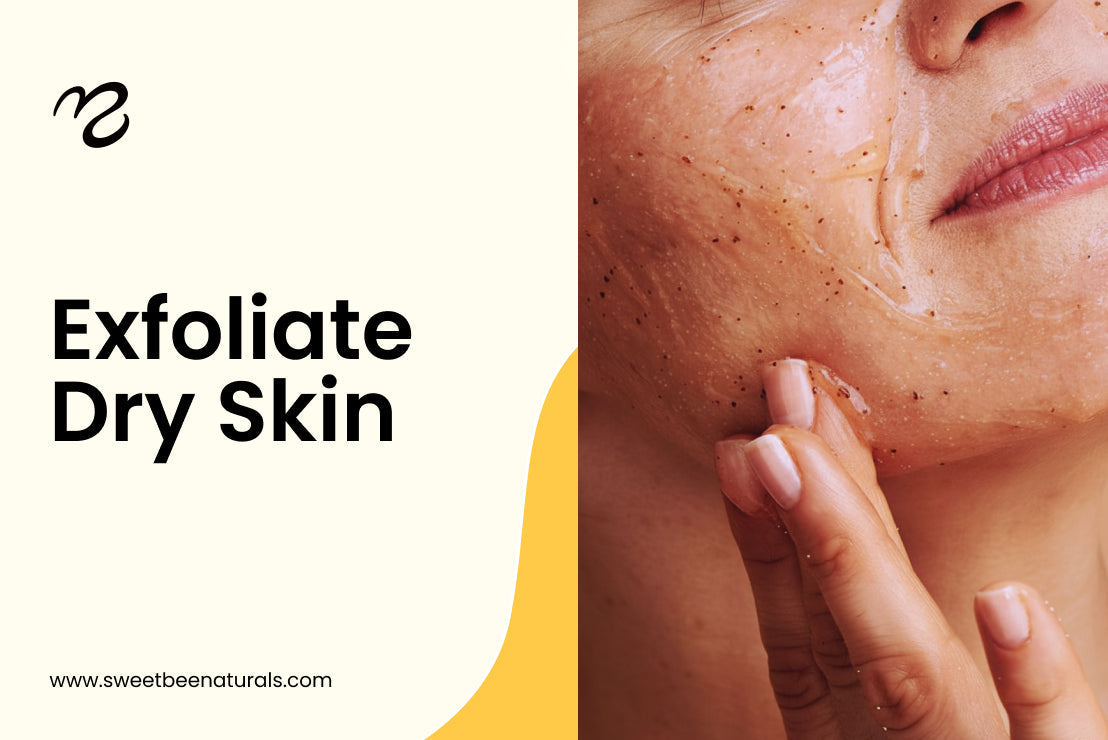Have you experienced an itchy bump or annoying sting after shaving? Razor burn may happen if you use an old razor or have sensitive skin. It may also be due to poor shaving habits and a lack of skin care. Redness after shaving can linger for several days affecting your appearance and causing discomfort.
But how can you prevent razor burn? In this article, we will discuss the reasons behind the razor burns and how to avoid them. We will also look at skincare products that are gentle to your skin and how you heal razor burn.
What Is Razor Burn?

Razor burn is a skin irritation that happens after shaving. It may cause skin redness, itching, or a rash-like texture. Razor burn may last for a few days and can be uncomfortable and stinging.
Many people mistake razor burn for razor bumps, but they are actually two different issues. Razor bump is a “pseudofolliculitis barbae”, which occurs when your hair starts growing inside after shaving.
This ingrowing hair may cause inflammation and a red bump. However, razor burn appears on the skin surface. It does not penetrate the deeper layers of the skin.
Additionally, individuals with skin allergies, such as eczema or dryness, are more susceptible to razor burn. That’s why they need special preventive measures.
Razor Burn vs Razor Bumps: A Quick Comparison
As previously mentioned, there's a difference between razor burn and razor bumps. Below is a complete comparison to help you understand this key distinction before exploring the causes and prevention methods.
|
Feature |
Razor Burn |
Razor Bumps |
|
Cause |
Friction, shaving irritation |
Ingrown hairs |
|
Appearance |
Redness, stinging patches |
Small, raised, pimple-like bumps |
|
Time to Heal |
1–3 days |
Up to a week or more |
|
Best Treatment |
Soothing balms, moisture |
Exfoliation, ingrown hair removal |
The Most Common Causes of Razor Burn
1. Dull and Old Blades
If you are using an old and dull blade, it can be a reason behind razor burn. Its blunt surface may cause drag and friction on your skin which can harm it and lead to redness.
2. Dry Shaving
Shaving on dry skin can also lead to a harsh shaving experience, causing your skin to itch. Before shaving, always use water or shaving cream to keep your skin soft and provide lubrication. Good quality shaving creams also have skincare ingredients that make your skin smooth and soft.
3. Rushing or Aggressive shaving
Shaving too fast or applying pressure to your skin is also a significant cause of razor burn. It removes the protective layer of your skin. As a result, your skin reacts with redness, irritation, and itching.
4. Skin type
Skin type is also a significant factor in razor burn. Sensitive, eczema-prone, or dry skin needs special care while shaving.
5. No Aftercare
If you are not applying hydration to your skin after shaving, it may lead to razor burns. Proper hydration keeps your skin soft and provides an environment for healing.
Easy Steps To Avoid Razor Burns

The best way to stop razor burn is to prevent it in the first place. Follow these easy steps before, during, and after shaving to protect your skin and avoid irritation.
Step 1: Hydrate Your Skin
Before shaving, wash your face or hydrate your chin hair with water. Using shaving cream also creates a smooth, creamy layer that softens the skin and reduces friction during shaving.
Step 2: Shaving Carefully
Once you properly hydrate your skin, you can start shaving by following the given steps.
- Shave in the direction of hair growth to reduce the risk of cuts and razor drag.
- Use short, light strokes. Pressing too hard or making long strokes can cause microtears.
- Rinse the blade after every stroke to keep your razor clean and prevent buildup.
- Avoid repeating over the same area: Over-shaving weakens the skin barrier.
Step 3: Post-Shaving Skin Care
Shaving is a harsh process. It can remove your skin’s protective layer with hair if not done correctly. That’s why it is important to do it gently. Here are the steps you must follow after shaving:
- Rinse with cool water. This closes the pores and calms inflammation.
- Pat dry with a clean towel. Avoid rubbing, which can irritate freshly shaved skin.
- Apply a soothing balm or moisturizer. Always choose a formula with calming ingredients.
This will help you lock in moisture and soothe your skin.
How to Treat a Razor Burn?
If razor burn strikes you and you want to know “how do I treat razor burn?”, here are a few tips that can help you treat it.
-
Soothe your skin with skin-friendly ingredients: Apply natural remedies like aloe vera, honey, or colloidal oatmeal to reduce inflammation and discomfort. These ingredients offer gentle hydration and create a soothing barrier on the skin.
-
Skip alcohol-based aftershaves: Products with alcohol can irritate and dry out the skin, worsening the condition. Instead, use a fragrance-free balm or lotion designed for sensitive skin.
-
Keep your skin hydrated: Moisturizing consistently prevents dryness and helps repair the skin barrier. Choose creams with nourishing ingredients like ceramides or shea butter.
-
Hands off the irritation: Avoid scratching, rubbing, or picking at the area. This can lead to infection, scarring, or prolonged redness.
- Let your skin rest: Pause shaving for at least 48 hours to give your skin time to fully recover. This break helps reduce ongoing friction and irritation.
How Sweet Bee Magic Skincare Balm Helps to Prevent Razor Burn
Your skin needs extra care, especially after shaving. That’s where Sweet Bee Magic all-in-one organic balm helps calm irritation using Melexylem™, a powerful mix of raw honey, propolis, royal jelly, and beeswax.
Moreover, it is USDA Organic Certified which means it is made without any synthetic ingredients. It is also safe for sensitive skin, allergies, and even eczema.
When to See a Dermatologist for Razor Burn
While most razor burn heals on its own, there are times when medical help is needed:
- If bumps last more than a week
- If there is pus, bleeding, or signs of infection
- If razor burn keeps coming back despite proper care
In these cases, dermatologists may recommend topical corticosteroids, antibiotics, or even laser hair removal.
Conclusion
Razor burn is common, but it is not impossible to prevent. You can get a smooth shave by using pre-shaving care, using the right techniques for shaving, and applying moisturizer or skincare after shaving to reduce the harshness. Individuals with sensitive skin, dryness, or eczema are more susceptible to skin burns after shaving.
If you already have a shaving burn, you should use alcohol free ingredients, moisturizer, and take a break from shaving. However, an extended redness and burning sensation for more than a week requires a dermatological consultation.



